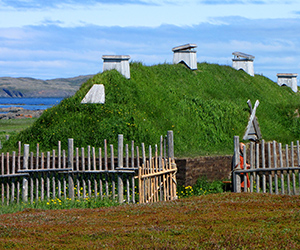CANADA HISTORY - Political Parties
Progressive Party of Canada

The Progressive Party of Canada was a federal political party that emerged in the early 20th century as a response to the economic and social challenges faced by farmers, particularly in Western Canada. Its origins can be traced back to the post-World War I period, a time of deep frustration for many rural Canadians who felt that the two dominant political parties, the Liberals and Conservatives, were not addressing the needs of agricultural communities. Farmers were burdened by rising costs, low commodity prices, and high tariffs on manufactured goods, which they believed disproportionately benefited the industrial and urban sectors of Eastern Canada. Out of this discontent, the Progressive Party was born as a populist movement that aimed to represent the interests of farmers and rural Canadians in federal politics.
The roots of the Progressive Party lay in the agrarian reform movements of the late 19th and early 20th centuries, such as the Grange movement and the United Farmers organizations, which had called for fairer economic policies for farmers. These movements had already gained traction provincially, particularly in the West, where farmers formed influential organizations like the United Farmers of Alberta (UFA) and the United Farmers of Ontario (UFO). By the early 1920s, these groups sought to bring their demands to the national stage, advocating for lower tariffs, free trade, government regulation of monopolies, and public ownership of key industries, including railways. The Progressives saw themselves as the voice of the “little man” against the entrenched political and economic elites, calling for a more democratic and decentralized system of governance.
The Progressive Party of Canada was officially formed in 1920, largely driven by the organizational efforts of the Canadian Council of Agriculture and its president, Thomas Crerar, a former Minister of Agriculture in the Liberal government. Crerar had resigned from the Liberal cabinet in protest over the government’s high-tariff policies, which he felt were unfair to farmers. Under his leadership, the Progressives launched their first federal election campaign in 1921. The party’s platform, known as the Platform of Principles, called for tariff reduction, free trade with the United States, the nationalization of railways, and proportional representation. The Progressives also championed direct democracy through the use of initiatives and referendums, believing that ordinary citizens should have more say in the political process.
In the 1921 federal election, the Progressive Party achieved remarkable success, winning 64 seats, primarily in Western Canada, but also making inroads in Ontario and the Maritimes. This marked the first time that a third party had made such a significant breakthrough in Canadian federal politics. The Progressives’ success was largely attributed to their ability to tap into the deep sense of alienation and frustration among farmers who felt neglected by the federal government. Despite this success, however, the Progressives refused to form the official opposition in Parliament, which was a reflection of their deep-seated distrust of traditional party politics. Instead, they operated as a loose coalition of like-minded MPs, rejecting the rigid party discipline that characterized the Liberal and Conservative parties.
One of the key challenges facing the Progressive Party was its lack of a unified leadership and cohesive national identity. While Thomas Crerar was the party’s nominal leader, the Progressives were a decentralized movement with no clear hierarchy or national organization. Many of its MPs were reluctant to follow traditional party lines, preferring instead to represent the specific interests of their constituents. This lack of unity ultimately proved to be a major weakness, as it became increasingly difficult for the party to present a coherent and consistent national platform. The party was also divided on key issues such as whether to align with one of the established parties or remain a purely independent movement.
In 1922, Crerar resigned as leader, frustrated by the difficulties in uniting the diverse factions within the party. His departure signaled the beginning of the Progressive Party's decline as a national political force. The party’s decentralized structure and refusal to adopt traditional party discipline made it difficult for it to maintain its electoral strength. Many Progressive MPs, particularly those in Ontario and the Maritimes, gradually began to drift back to the Liberal Party, which under William Lyon Mackenzie King had adopted some of the Progressives’ platform, particularly on the issue of tariff reduction.
One of the most significant moments in the party’s history came in 1926 with the King-Byng Affair, a constitutional crisis that arose when Governor General Lord Byng refused Prime Minister King’s request to dissolve Parliament and call an election after his government had lost a confidence vote. The Progressives played a key role during this period, as King relied on their support to maintain his minority government. However, the party’s influence continued to wane as its members became increasingly divided over whether to support King or pursue their own independent agenda.
By the late 1920s, the Progressive Party was in a state of decline, with many of its members either retiring from politics or joining the Liberal Party. The party’s inability to present a united front, combined with the erosion of its rural base, led to its near disappearance from federal politics by the early 1930s. In 1930, the remnants of the Progressive Party aligned themselves with the Conservative Party under R.B. Bennett in a failed attempt to defeat the Liberals, further diminishing the party’s distinct identity.
One of the lasting legacies of the Progressive Party was its influence on Canadian political discourse, particularly in shaping the policies of the Liberal Party. Many of the Progressives’ key ideas, such as tariff reform, public ownership of railways, and the protection of farmers' interests, were adopted by the Liberals in the 1920s and 1930s. Additionally, the party’s emphasis on direct democracy and decentralization laid the groundwork for future political movements in Canada, including the rise of the Co-operative Commonwealth Federation (CCF) in the 1930s and the eventual creation of the New Democratic Party (NDP) in the 1960s.
The Progressive Party’s most significant contribution to Canadian politics was its ability to give a voice to Western Canadian farmers and rural communities who felt marginalized by the federal government. While the party ultimately failed to sustain itself as a national political force, it succeeded in forcing the established parties to pay greater attention to the concerns of rural Canadians. The Progressives’ success in the 1921 election also demonstrated the potential for third parties to challenge the traditional two-party system in Canada, paving the way for future political movements that sought to represent regional and populist interests.
By the 1940s, the Progressive Party had effectively ceased to exist as an independent political entity, with most of its members either retiring or joining other parties. However, its legacy lived on through its influence on the policies of the Co-operative Commonwealth Federation and its eventual merger with the Conservative Party to form the Progressive Conservative Party of Canada in 1942. This merger reflected the enduring appeal of the Progressive Party’s agrarian and populist ideals, which continued to resonate with many Canadians, particularly in the West.
Today, the Progressive Party of Canada no longer exists, but its impact on Canadian political history is undeniable. It represented a unique moment in Canadian politics when the voices of rural Canadians were able to challenge the dominance of the traditional political elites. The party’s rise and fall serve as a reminder of the challenges faced by third parties in Canada’s political system, particularly in terms of maintaining unity and coherence in the face of entrenched political institutions. The Progressives’ legacy, however, continues to be felt in Canadian politics, particularly in the ongoing debates over regional representation, the role of government in economic regulation, and the protection of rural and agricultural interests.
Cite Article : Reference: www.canadahistory.com/sections/documents/documents.html
Source: NA



